
NOTE: Prices listed are from the original post date.
Way out there in the middle of the Australian Outback is Uluru, the iconic red rock that’s basically the symbol of the whole of Australia’s Red Center. And whe I say it’s out there I mean it’s way out there. Like over 400 km from the nearest town out there. Needless to say, a visit to Ayers Rock, or Uluru as the Aboriginal people have always known it, isn’t cheap. But since it’s practically the USA’s equivalent of New York City for those traveling to the country (if you’re going to be in the country you better have stopped to visit), Uluru is on most people’s travel list. Fortunately, we are here to help you save on your visit and see Uluru on a budget. Here’s our guide to Uluru.
Getting to Uluru
If you don’t own your own transport, there are only a few options when it comes to getting to Ayers Rock.
- Rent a car: You’ll probably want to do an overnight trip since it’s between a 5-6 hour drive from Alice Springs to Uluru (assuming you’re coming from Alice Springs). A two day rental will run you about $120 AUD. But most car rental companies do not offer unlimited kilometers when you book directly with them. Fortunately, booking through the information center in town does, so book through them.
- Take a tour: Tour companies abound in Alice Springs. You can also take a tour from Adelaide or Darwin, but they’ll obviously be much pricier at around $800 AUD. From Alice Springs a one-day tour (a very long one day) starts around $215. An overnight tour with camping accommodation and a look at Kings Canyon will run you closer to $500.
- Shuttle: Several companies offer shuttles to and from Yulara (the resort area outside the park) leaving you in charge of lining up transport once you arrive. These shuttles cost $120 one-way and once in Yulara you can book local tours or shuttles out to see the rock starting at $60.
- Fly: There is an airport near Uluru, but fares are expensive. Qantas is the only airline that flies out there, but they occasionally offer specials from Melbourne or Sydney.
- Less likely options: If you’re not on a tight schedule and can wait a week or two, you may be able to participate in a rideshare via Gumtree or Coseats to Uluru. We didn’t have much luck with this in May. We couldn’t find a single person who was also looking for travel mates to split the cost of fuel or a rental. However, if you happen to make friends with other travelers while in town, your chances may improve. Another possibility is to score a campervan relocation on Coseats to Adelaide or Perth and make a pit stop on the way (it’s not really on the way, but you know what I mean). You’ll probably have to pay for extra kilometers or an extra day or two for the van, but it’s an option. This is what we did. Just keep in mind that fuel prices in the outback are astronomical!
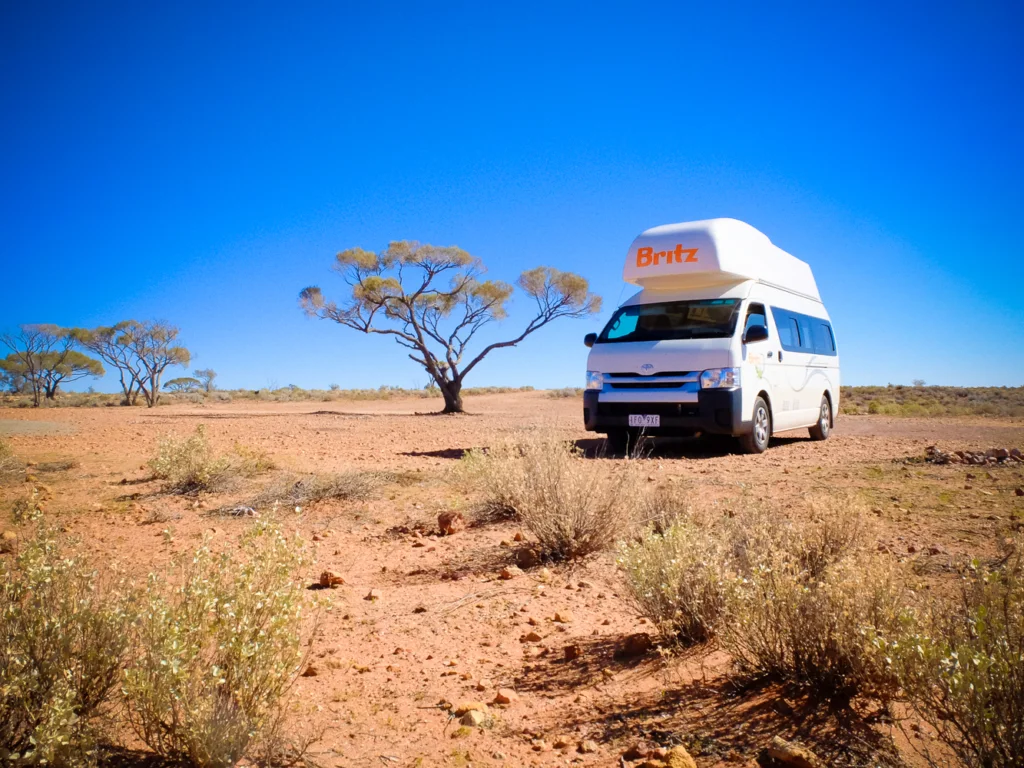
Free things to do at Uluru
There are a handful of activities to occupy your time that don’t cost a thing.
- Lookouts: There are a handful of lookouts in Yulara, the resort area, that offer distant views of the rock and all of them are quick, easy walks. Pick up a map at the information center.
- Browse: There are several souvenir shops in Yulara, so take your time and have a look. There’s a Post Shop, too, so you can pick up a few Uluru post cards to send home while you’re there.
- Daily Ranger Guided Mala Walk: Every day at 8:00 or 10:00 (check with the info center), there’s a two hour guided walk led by the local Aboriginal people and offers info on Aboriginal culture, plants and wildlife, and the significance of the rock.
- Sunrise and sunset: Provided you’ve already paid for your park entry, watching the sunrise and sunset over Uluru and Kata Tjuta is free. You can watch the colors of Uluru change right before your eyes and enjoy dinner/breakfast/a cold beverage from a camp chair in front of your car. The viewing lots are signposted so you know where to find them. We were far more impressed with sunset than sunrise on Uluru, but Kata Tjuta looked pretty spectacular in the a.m. from afar. Times will be posted in the info center and around the resort.
- Take a walk: There’s a 10.6 km walking track around the base of Uluru, so lace up your boots and head outside. Start early in the day during summer so you’re not out in the outback’s afternoon sun for too long. We don’t recommend doing the Uluru climb, though. The local Indigenous people wish you wouldn’t, and as it’s their land, we believe you should respect their wishes. There are also walks around Kata Tjuta and you can pick up maps at the info center in Yulara.
- See the camels: It may cost a pretty penny to ride one, but you can go and say hello, maybe snap a few photos for free at the camel farm outside Yulara.
- Cultural Center: Inside the National Park is the cultural center where you can wander through and learn about the significance of the park and the traditions of the Anangu people who call the land home.
- Galleries: There are several places to see Indigenous art and learn a bit about it both inside and outside the park. Check out a full list of them here.
- Other Free Activities: Other activities are available from time to time and can be found here.
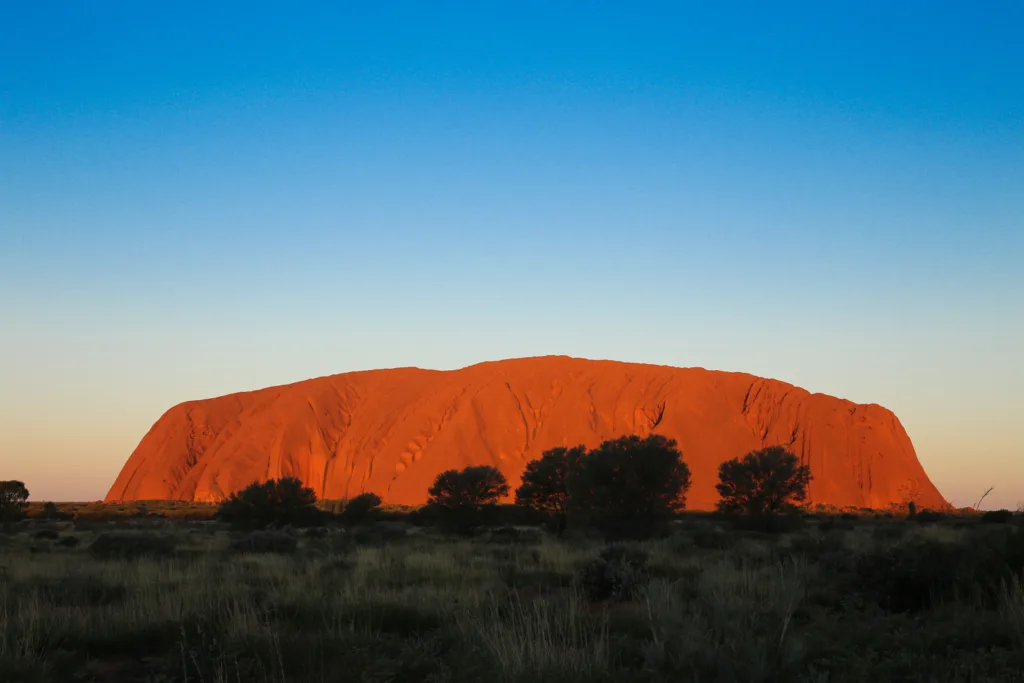
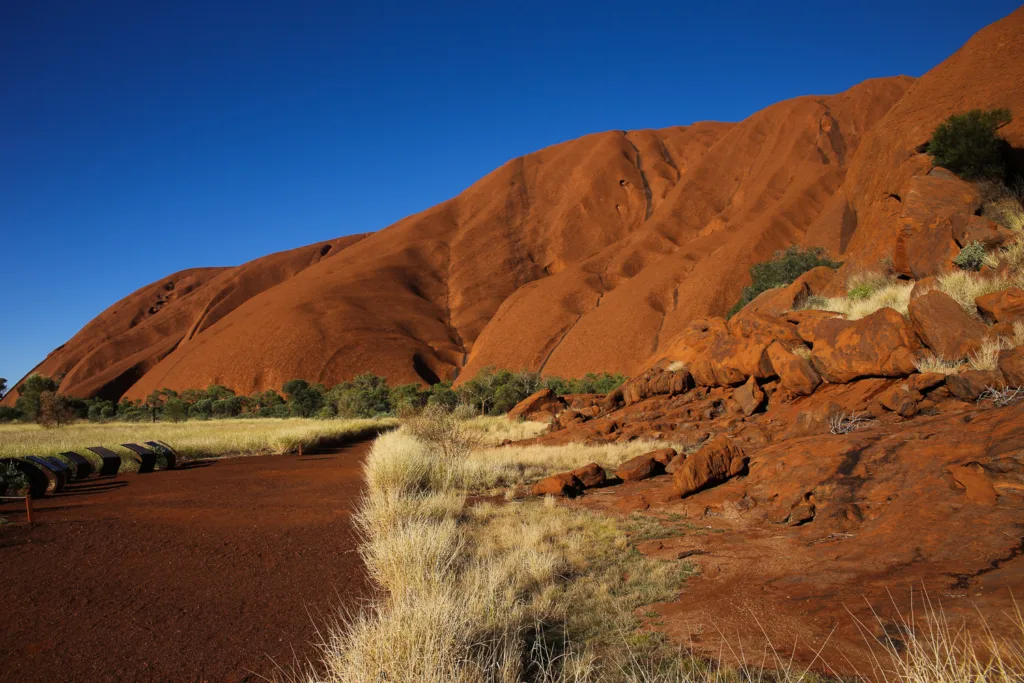
Cheap things to do in Uluru
- Enter the park: Getting up close and personal with Uluru requires a pass into Uluru-Kata Tjuta National Park. And it’s not cheap. The cheapest pass available is for 3 days (72 hours) and costs $25 per person. The only way to save, and it may be a dubious one, is to find travelers who have just left the park and buy their passes if they didn’t stay the whole three days or resell yours if you didn’t. The place to do so is Curtin Springs, 80 km east of Uluru.
- Field of Light: We cannot recommend more highly spending the cash to see this amazing installation. Artist Bruce Munro has crafted a vibrant display inside the park near Uluru using fiber optic cable and 50,000 glass globes to create a field of light in the desert terrain. Watching the bulbs change color and glow in the dark under a starry sky is simply sensational! The cheapest viewing option is $35 per person, with several other more experiential options available. But for the Star Pass you will be picked up at your accommodation, shuttled out and back to the installation, and allowed a bit over an hour to wander through the field of light, taking photos and experiencing the joy of Field of Light. But it’s only on until March 2017, so get moving! Update: The Field of Light experience has been extended for another year! So you can now visit until March 2018! And we highly recommend that you do.
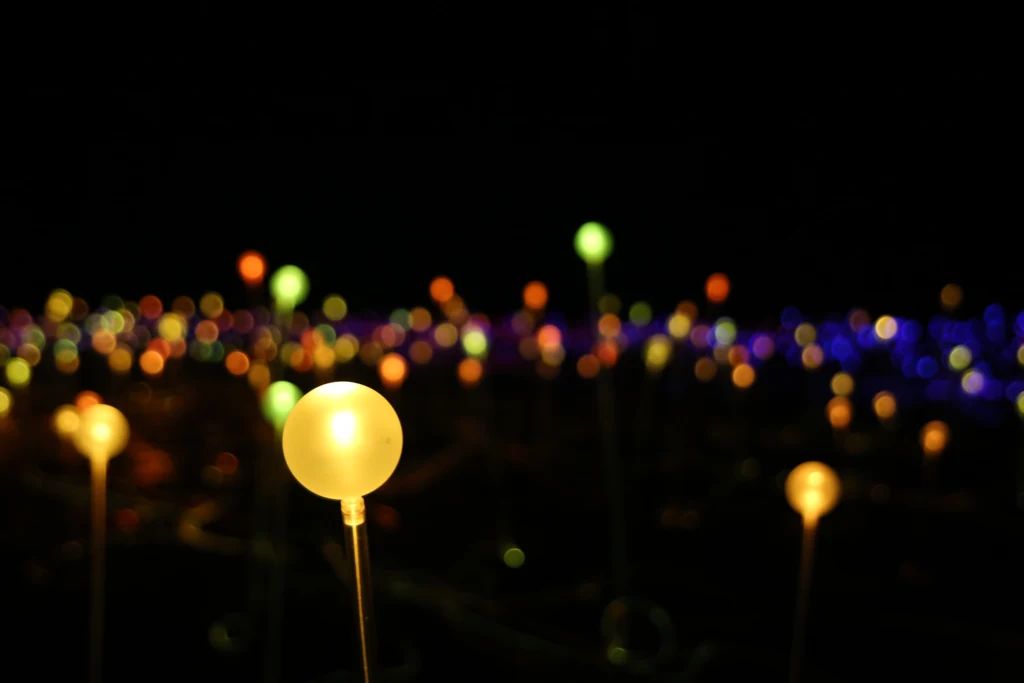
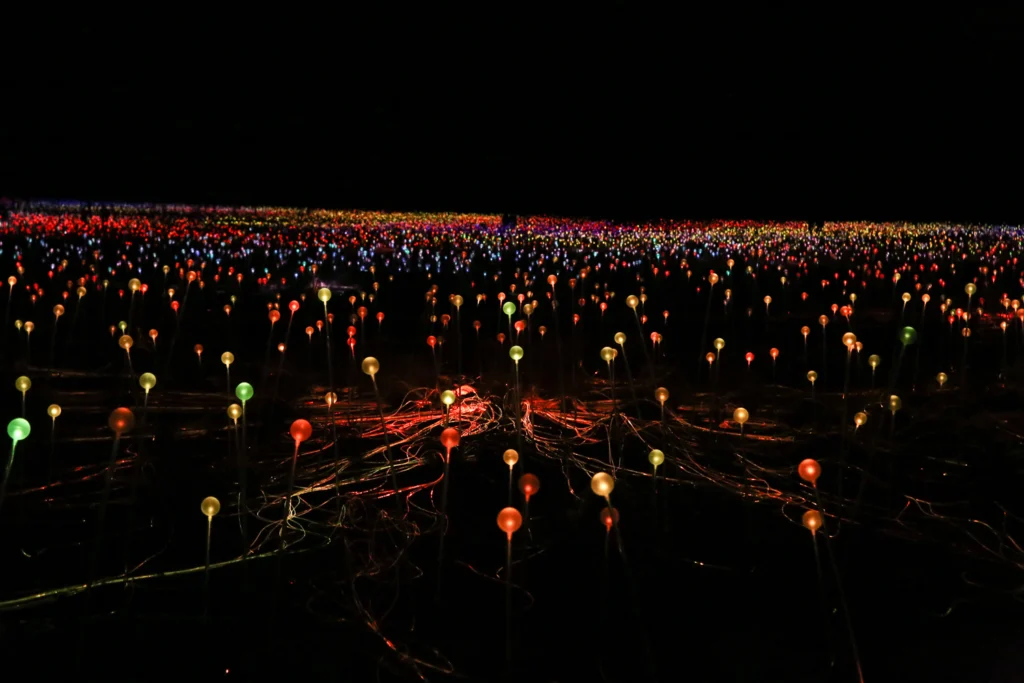
Where to Stay at Uluru
The resort area of Yulara has the only accommodation anywhere near Uluru and all the hotels and resorts are owned by the same company, so it’s all fairly expensive. However, there are cheap accommodation options near Uluru.
- Camping: This is by far the cheapest option when visiting Uluru. For $36 per night you can get a basic tent camp site at the campground in town.
- Pioneer Hotel: A hostel style dorm room is the next best option in Yulara, the resort area where all the accommodation is owned and operated by the same company (read: no competition between hotels fighting for your dollars). The cheapest option will run you $38 per person per night.
- Freedom Camping: Along the only road that leads from the highway to Uluru there are several places to pull off or camp for free. The closest proper camp site is at Curtin Springs, 80 km away from the park. Camping is free, you just have to pay a couple bucks if you want a shower. Closer to the park are a handful of pull-offs that, while less secluded and without toilets or water, still offer a place to sleep for a night. We parked our campervan in a little pull off with a sculpture and an informational sign 5 minutes outside the park. Just make sure to follow Leave no Trace principles.
Cheap Eats
- Supermarket: There are several cafes and restaurants in Yulara, but if you’re getting anything more than your morning flat white, it’ll cost ya. Your cheapest option for feeding yourself while out there in the middle of nowhere is to shop at the supermarket in Town Square and cook your meals over a camp stove or in a hostel kitchen. There are also bar-b-ques at the campground.
Alisha is a freelance outdoor journalist and photographer based in Ogden, UT. She loves backpacking, hiking, mountain biking, kayaking and snowboarding (even though she’s terrible at it). She’s also pretty sure she’s addicted to coffee. alishamcdarris.com
